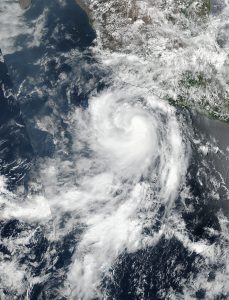
A combination of rising water temperatures and ebbing El Niño conditions in the Pacific have prompted the National Oceanic and Atmospheric Administration to forecast a potentially record-breaking hurricane season for the North Atlantic, with the expectation of at least 13 hurricanes to form over the season.
“This season is looking to be extraordinary in a number of ways,” according to NOAA administrator Rick Spinrad, and added that 2024 was on track to be “the seventh consecutive above-normal season.”
The predicted number of storms for this forecast is the highest ever issued by NOAA: the Administration expects between 17 and 25 named storms to form in the North Atlantic; 13 of these are expected to grow into hurricanes with wind speeds of at least 74 mph (119 km/h); and between four and seven are expected to be major hurricanes, sporting winds of at least 111 mph (179 km/h).
This prediction is in stark contrast to the average hurricane season, of which typically sees 14 named storms, seven hurricanes and three major hurricanes; 2020 was the most active season on record, with 30 named storms forming in the Atlantic Basin.
Along with the continued rise of sea surface temperatures acting as hurricane fuel in both years, 2020 was a La Niña year, with the cooling of equatorial Pacific waters reducing vertical wind shear over the Atlantic: strong wind shears tend to slow and stabilize the winds of hurricanes, dampening the severity of the storm.
Conversely, a lack of wind shear strength enables the wind speeds of strong storms to reach even higher levels, increasing the chances of any given storm to reach higher-category status. NOAA reports that there is a 49 percent chance of La Niña conditions coming to the equatorial Pacific during the June-August period, rising to a 69 percent chance between July and September.
These wind speeds have been steadily increasing over the years, prompting some scientists to call for the addition of a sixth category to the Saffir-Simpson Wind Scale that takes storms with wind speeds in excess of 192 mph (309 km/h) into account.
Subscribers, to watch the subscriber version of the video, first log in then click on Dreamland Subscriber-Only Video Podcast link.
1 Comment